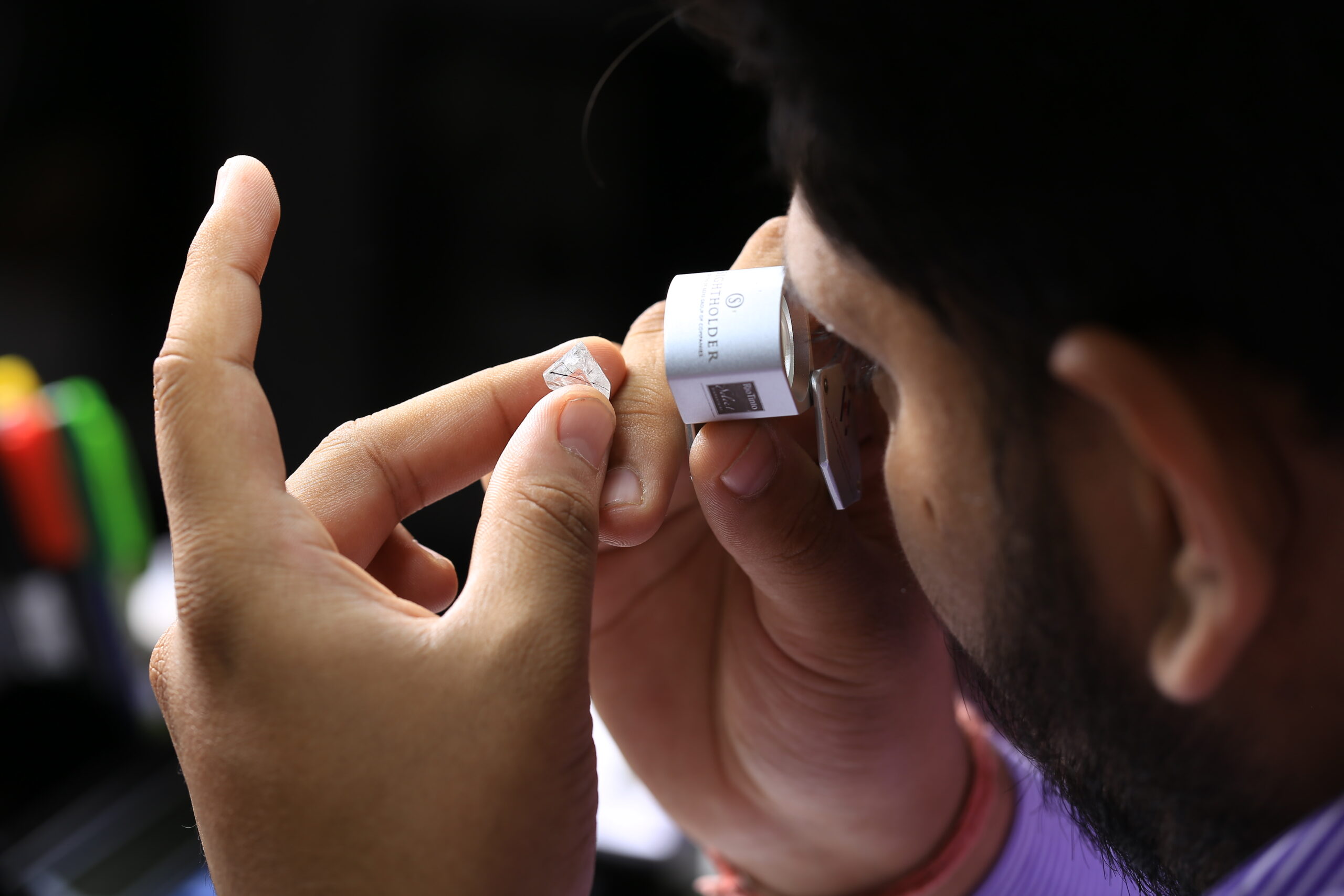What is Direct Rough Diamond Sourcing and How does it impact the end customer?
Posted by Hari Krishna
November 29, 2022
We already know that natural diamonds are found deep within the Earth’s surface and are formed over millions of years. Once extracted, they go through a long process which generally involves
Followed by a few more steps after which it reaches the customer. But it is important to note that the entire process starts with the sourcing of the diamond. Every big and small diamond company does not actually “own” a diamond mine. Companies purchase it from mining companies and this is called sourcing.
The mode of sourcing also impacts the final price at which diamonds are offered to a customer.
Manufacturers have three main concerns when sourcing rough diamonds:
In this blog you will learn the ways rough diamonds are sourced by diamond manufacturers and how exactly it impacts the end consumer.
Diamond manufacturers have two ways to purchase rough diamonds. Either to purchase directly from the mining companies or purchase from a secondary trading market.
The best diamond manufacturers prefer buying directly from mining companies and this is quite a common way of purchasing rough diamonds. Mining companies can sell their diamonds through either one of these
Let’s understand the direct rough diamond sourcing options in detail
Sight-holder system is the most reliable and safe option to purchase rough diamonds from the world’s major mining companies such as De Beers, Rio Tinto, Alrosa, Dominion Diamond, and many more.
These mining companies organize exclusive events/sales sessions/sights by invitation only, where the diamond manufacturers can purchase rough diamonds.

A list of around hundreds of leading diamond manufacturing companies in the world is maintained and they are invited to the exclusive viewing of rough diamonds that they can purchase.
The short-listed diamond manufacturing companies tend to be large & financially stable firms. They are popularly known as the sight-holders of the particular mining company.
Given the fact that these companies have a large production capacity, diamond manufacturers get the advantage of having a stable and robust supply of diamonds throughout the year.
As for the cons, there is often little room to negotiate on price or quantity in this system.
But overall this is the best way of directly sourcing rough diamonds.
In recent years, many smaller mining companies that own only a few mines have emerged in the market.
Having only a few mines lowers the chances of being able to have a consistent supply of homogeneous diamonds. This is where tenders and auctions come in.
Diamond buyers are invited to view the diamonds for sale and evaluate what they believe to be the appropriate price for each parcel of diamond.
In contrast to the sight-holder system, where the price of each assortment is predetermined, in the tender process, manufacturers bid for the individual parcels.
In the tender process, manufacturers have an opportunity to see a diamond, scan it on a mobile system, conduct initial planning to estimate its value, and then make a bid for the diamond.
Just a side note that big companies also host auctions for their rare and larger diamonds.
Then auctions are similar to tenders except for the bidding process, which is more sophisticated in the auctions.
This channel of rough diamond sourcing actually allows even the smaller diamond manufacturers to purchase good quality diamonds. The price negotiation system helps companies with all kinds of budgets to find something valuable.
As for the cons, this channel does not guarantee a steady supply of rough diamonds which is the main attraction of a sight-holder system.
Trading centers such as Antwerp and Israel supply the secondary trading market for the rough diamonds.
The secondary trading markets supply rough diamonds on an as-needed basis to the manufacturers which makes it a critical channel for rough diamond supply as manufacturers need to spend millions each month to purchase regular allotments of rough diamonds.
Profitability in this market fluctuates with changes in supply or demand. That’s why the number of secondary market traders is gradually declining.
Hari Krishna Exports sources its conflict-free rough diamonds directly from the leading diamond mines of the world such as De Beers, Alrosa, Rio Tinto, Dominion Diamonds, etc.
Buying directly at the source reduces costs all through the chain. That’s the reason why Hari Krishna is famous in the industry for the best quality diamonds at affordable and fair prices.
HK is a certified member of Canada Mark and Forever Mark and the only Diamond Manufacturer having 8000+ employees to achieve the Responsible Jewellery Council [RJC] Certification.

Every diamond at HK is ethically sourced and responsibly managed. The diamonds are supported with an in-house Faith Certificate along with third-party certifications from GIA, IGI, HRD, GSI, GSL, and NGTC upon request.
Sign up here to receive the latest updates from the diamond industry, trends and sustainability in the natural diamond industry. Upon signing up, you also get to browse our latest collection of diamonds which are available in 9+ shapes.